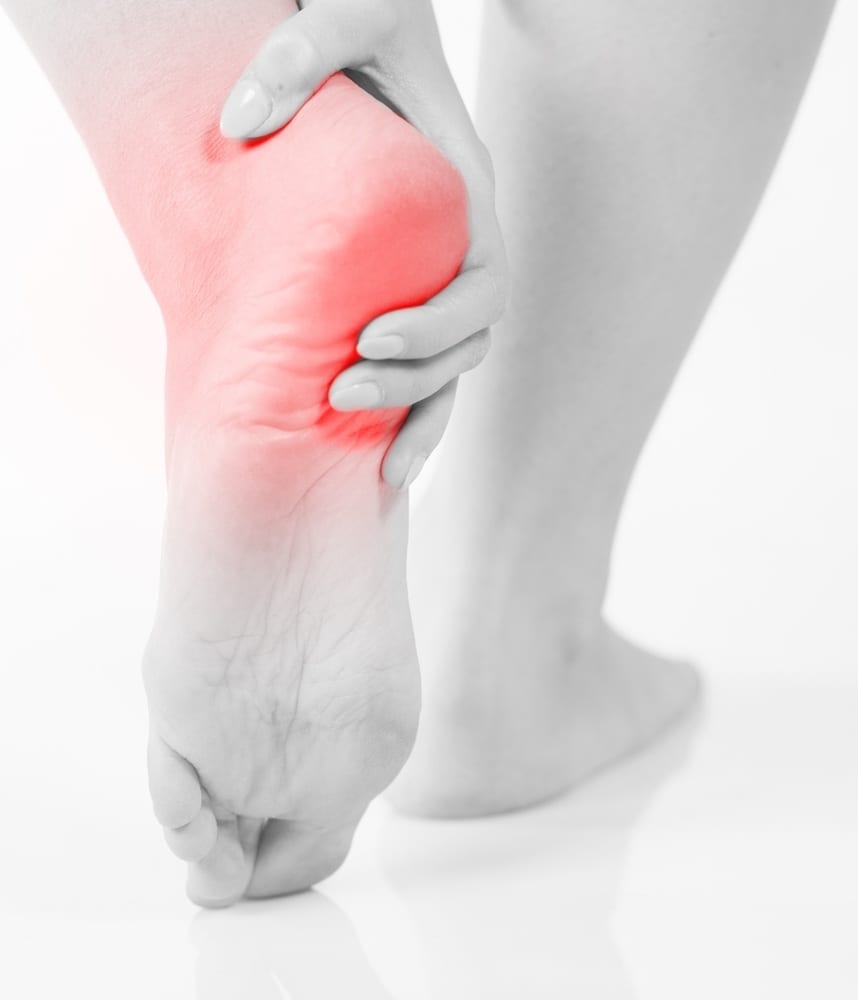The foot and ankle is an area of the body that takes a beating with
almost every physical activity. Most sports produce varying degrees
of high-intensity stress on the foot and ankle as the athlete twists,
turns, starts and stops. The foot and ankle design is actually quite
complex, with many different interconnected bones, joints, ligaments,
and tendons which must work in a coordinated fashion to allow
flexibility while providing stability.
There are many connections within the foot and ankle that can be
injured by specific events or may wear out over time. When you have
foot and ankle pain, it is literally announcing its presence “every step
of the way”. One of the most common structures that is injured in the
foot is the plantar fascia.
The plantar fascia is a large connective tissue structure that runs from
the heel to the toes along the sole of the foot. It provides a spring
structure to support the arch of the foot and store energy with every
step. Enormous forces are applied throughout the plantar fascia, and
painful tears can occur. Pain can develop anywhere along the fascia,
but the most common sites are at the heel and within the middle of
the arch. This is commonly called “plantar fasciitis” which suggests
that it is an inflammatory condition. However, most experts now
conclude that plantar fasciitis when present for 3-6 months or more is
usually not just inflamed but is more of a degenerative problem.
This distinction is important, because if the structure is simply
inflamed, then steroid injections will resolve it. However, in many
cases, when the condition is more degenerative in nature, there are
tears and other significant structural injuries, and steroid injections
will not resolve the pain permanently. Pain from an injured plantar
fascia structure can improve with…
• specific stretching techniques
• use of properly fitted insoles and shoes
• changes to the exercise program.
Sometimes the pain is associated with tight hamstring muscles and
other imbalances in the legs and pelvis, and these may need attention
from an experienced physical therapist or chiropractor.
The most consistently successful treatment for persistent heel and
plantar fascia pain uses growth factor injections to stimulate healing
of the damaged connective tissues via a process called
prolotherapy, which has been used for over 70 years to heal pain
throughout the connective tissues of the body. An advanced form of
this technique uses platelet-rich plasma (PRP), which inspires a
growth and repair process to stimulate your body to heal the injury
and create new, stronger, healthier connective tissue where you need
it the most. These techniques provide a permanent, healthy, natural
method to restore the damaged tissue back to its flexible, strong,
stable structure, allowing the athlete to resume sports uninterrupted
for the long term.
If you or a loved one has challenging foot or ankle pain, you should
consider regenerative medicine techniques such as prolotherapy/
platelet-rich plasma to stimulate a natural permanent healing
response and “put your best foot forward”.




